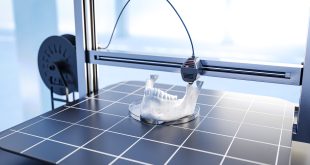By Mettler Toledo, in collaboration with Erwin Studer (Profact AG, Switzerland)
The successful implementation of “Lean Manufacturing” in several fields has inspired many businesses to adopt this model in laboratories as well. Laboratories have different challenges compared to manufacturing environments; while most of the key principles of traditional “lean” still apply, there are many unique points to be adopted in laboratories.
The aim of this checklist is to give you an easy approach to help you develop your lab into a Lean Lab. Answering the simple checklist questions will give you:
a) an overview of your current status and,
b) where it might be worth taking actions to improve your lab.
Each section contains helpful tips on how to improve that particular aspect of your lab.
Potential benefits of the Lean Lab approach
• More defined, structured and controlled laboratory processes delivering more consistent and predictable laboratory performance
• Significantly increased productivity
• Reduced lead times
• Reduced costs
• Reduced levels of WIP (Work In Process)
• Improved RFT (Right First Time)
• A detailed understanding of lab capacity and resourcing requirements
• Greater empowerment of laboratory personnel
• A culture of proactive performance management and continuous improvement
• Improved customer service levels
Work smarter not harder!
Lean Lab is primarily an internal organization task for process optimization. The objective is to contribute to improving the economic efficiency of an organization. The operational changes that lead to a Lean Lab (which can be initiated in small steps, module-by-module, at any time) are as follows: the standardized operation of several different devices, optimized workplaces and work processes, modular device combinations, standardized network-compatible software, and competent services. Build a culture of continuous improvement to sustain business benefits, from the customer down to the analyst level, drawing on new and innovative ideas, and sustaining its impact with mindset and behaviour transformations across the laboratory. Below are some fields for improvement that are important for the Lean Lab concept.
Success is measured by the ‘Magic Triangle’. The three corners must be balanced.
1. Housekeeping
Can your employees find and fetch tools quickly and easily?
Are the workstations clean, tidy and designed for purpose?
Are the general laboratory tools stored in an orderly manner and are they easy to locate?
Do you audit these conditions regularly?
Tips for optimization
• Don’t accept untidiness.
• Look on every shelf and in every drawer.
• Start a 5S program. Everything in its place.
• 5S also works on hard drives (IT).
• Is everything in good order? Regular auditing is a must.
• Assign a supervisor for each area.
2. Value Stream Mapping
Are there target times for standard analyses?
Are the lead times measured?
Do you know the proportion of non-value adding but necessary steps in your workflow?
Do you know the proportion of non-value adding and unnecessary steps in your workflow?
Do you know the proportion of value added steps in your workflow?
Tips for optimization
• Calculate the standard times for standard analyses.
• Measure the lead time.
• Determine what the value added steps are in terms of whether ‘an external customer would pay for these steps in the workflow’.
• Employ assistants or external companies for auxiliary activities (such as dishwashing, producing rinse solutions, etc.).
3. Workload
Is the workload distributed evenly over the days/week?
Is there a separate procedure for urgent jobs?
Is your workload coinciding with the previous phase (production) and are the deadlines in sync?
Are the agreed-upon deadlines being met?
Tips for optimization
• Set laboratory service hours.
• Synchronize your workload with the previous phase.
• Set up an option for urgent analysis.
• Assign someone to distribute the samples according to the current capacity and urgency.
• Keep a workflow plan for the HPLC/GC.
• Optimize the set-up times (eg. for HPLC or GC).
4. Laboratory Workflow
Is the analytical equipment arranged in a logical sequence?
Is the analytical equipment consistently arranged according to technology?
Are the distances between individual steps in the workflow short and sensible?
Do the samples flow through the laboratory?
Tips for optimization
• Optimize the travel distance.
• Arrange your analytical equipment according to technology or in work cells; it may be necessary to change the layout of the laboratory.
• When you build a new laboratory, take the unique opportunity to apply Lean principles.
• Make sure that samples flow through the laboratory.
5. Performance Management
Are the most important indicators such as OOS, RFT, etc. regularly determined and used to optimize processes?
Are the indicators analyzed, visualized and included in a report?
Can you report on productivity without investing additional time and effort?
Is the available laboratory capacity being managed effectively?
Tips for optimization
• Measure your KPIs.
• Lead time is a possible KPI.
• First pass rate is another.
• Visualize the KPIs.
• Discuss KPIs regularly with your staff.
6. Equipment
Is your most important equipment in top condition?
Are the present equipment capabilities and technologies adequate and regularly assessed?
Can calibration/qualification of the most important equipment be carried out efficiently?
Are replacement parts or important components managed properly?
Does the ease of operation match the level of competency and knowledge of the staff?
Tips for optimization
• Perform regular maintenance on the equipment and avoid unplanned breakdowns.
• Make sure any necessary accessories are also stored on-site.
• Automate existing systems whenever possible (such as an autosampler and quicker data transfer).
• Reduce sources of contamination (such as water baths).
• Practice active obsolescence management.
7. Skills of Lab Personnel
Is there an overview stating which employees can perform which activities at what level?
Is staff employment flexible enough?
Is enough time and money being spent on staff training?
Tips for optimization
• Keep skill matrices, not only stating yes/no, but including details on skill levels of each employee.
• Determine how many cross-skills are necessary.
• Make enough time and money available.
• Make regular fitness checks, for example, for HPLC.
• Monitor unplanned absenteeism.
8. Lab Chemicals/Auxiliary Material
Are laboratory chemicals and other materials re-ordered systematically, immediately and without great expense?
Are the expiry dates of laboratory chemicals and reagents systematically checked?
Are the inventories of reagents and consumables managed effectively?
Tips for optimization
• Use an appropriate laboratory labeling system.
• Manage your materials using the KANBAN method.
• Avoid excessive inventories.
• Reduce the number of articles to be used.
9. CIP Activities
Are systematic methods such as value flow analyses, CIP/KAIZEN, etc. used for process improvement?
Is staff sufficiently involved in these processes?
Are there dedicated staff who have been trained in systematic process optimization?
Tips for optimization
• Train staff in root cause investigation methods.
• Motivate your employees to get involved with CIP/KAIZEN activities.
• Measure the progress.
• Be good to yourselves and talk about it.
Analysis and Feedback
Count the number of questions you answered with a ‘Yes’ and add them up.
1-15
Start a Lean project in your laboratory. Start with small steps. 5S is an effective way to start.
Assign a project leader who can dedicate approximately 20-50 % of their time to this project.
Analyses are also good to see where the greatest deficits lie.
16-28
You are on the right track, but there is still room for improvement. You may want to clarify the question of resources or assign priorities differently.
29-35
Congratulations! Your lab is lean. Keep it up. Continuous improvement and follow-ups are crucial. Share your knowledge with your colleagues. Your efforts should be visible in terms of costs, quality and lead times.
 BioLab Business Magazine Together, we reach farther into the Canadian Science community
BioLab Business Magazine Together, we reach farther into the Canadian Science community





